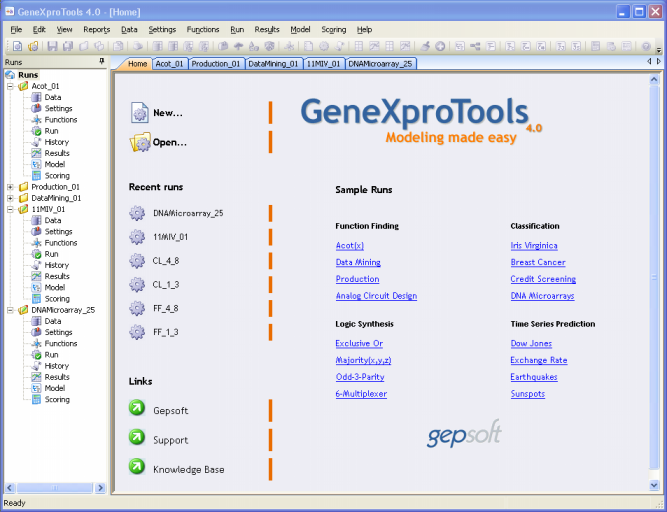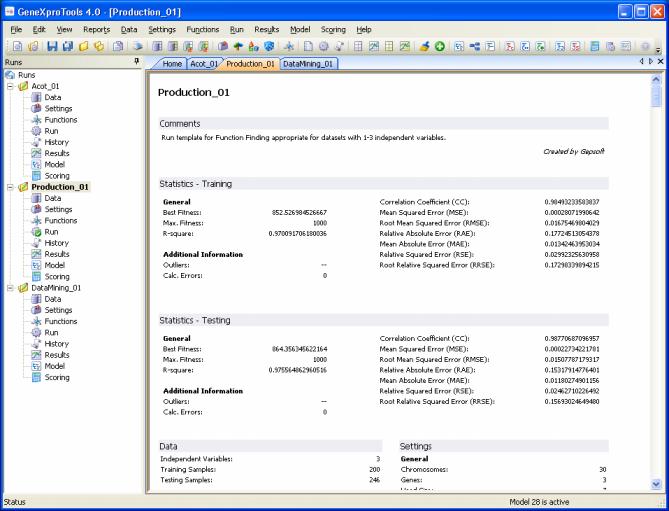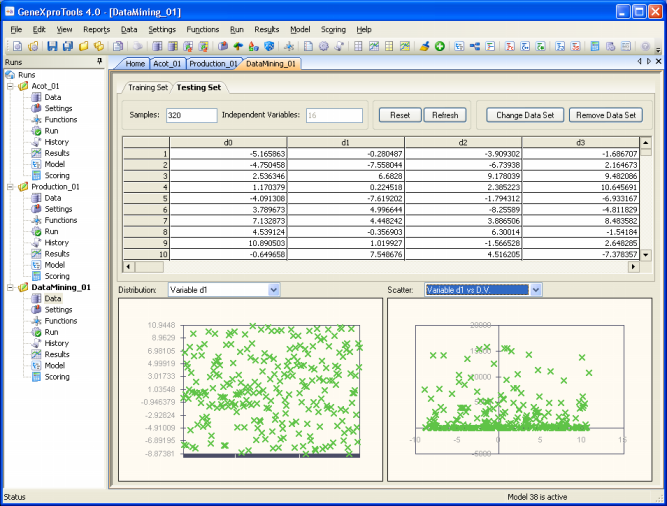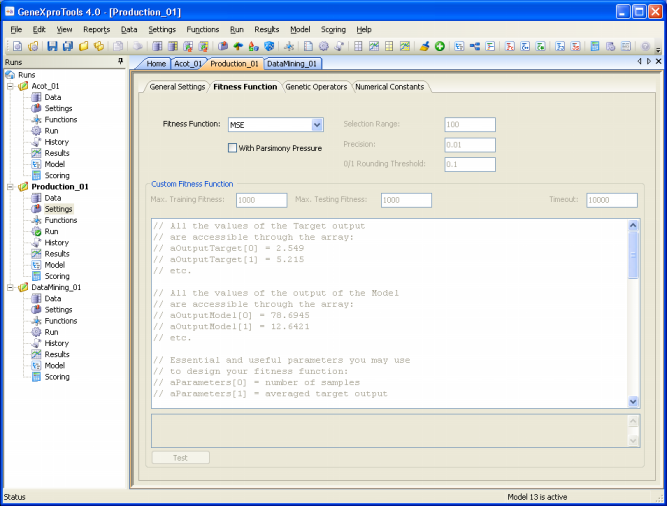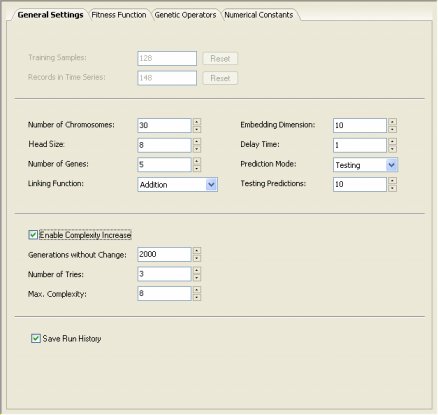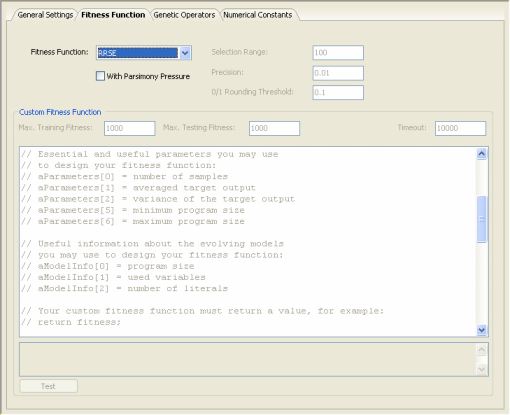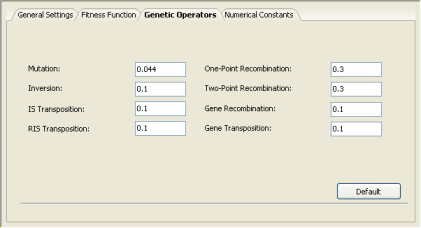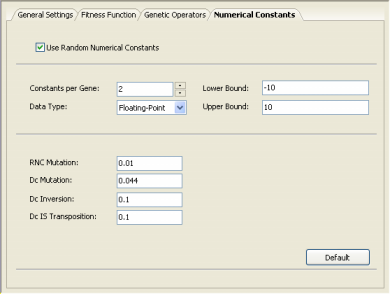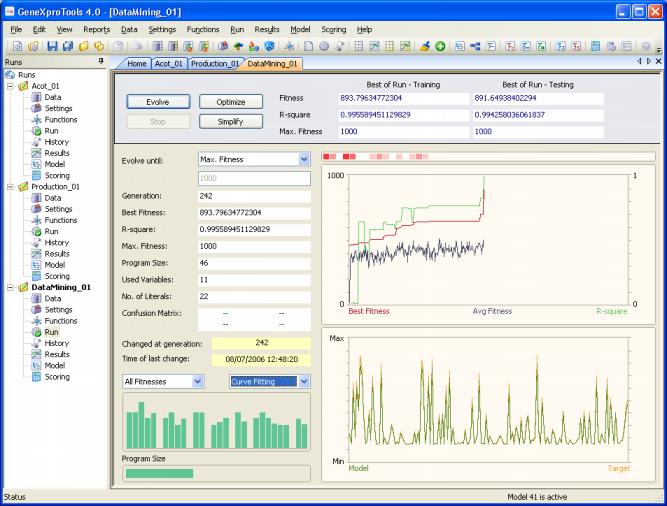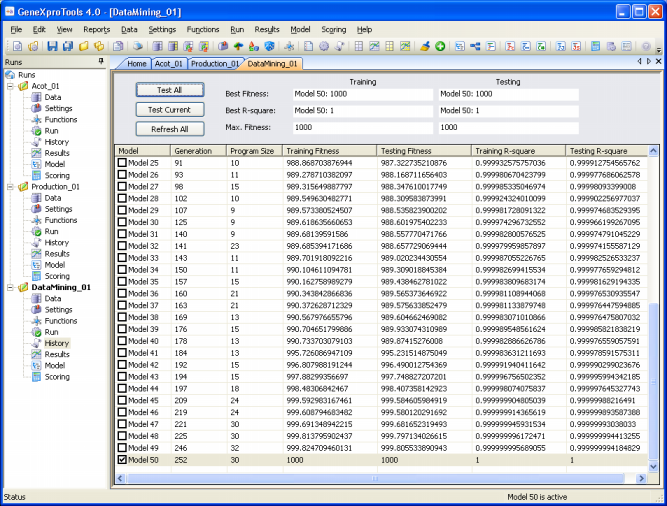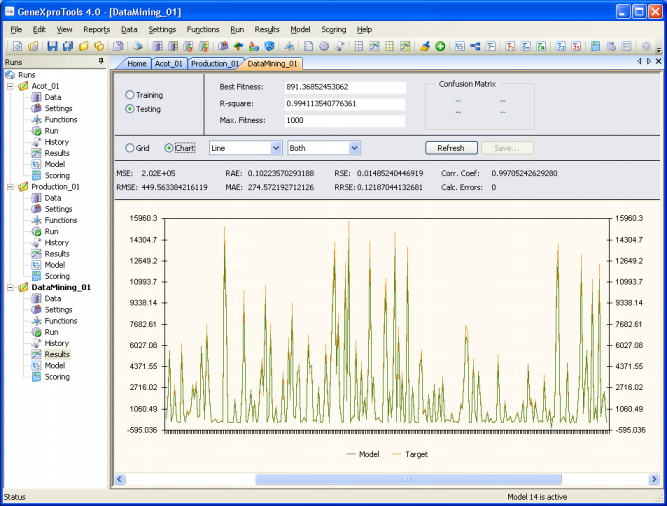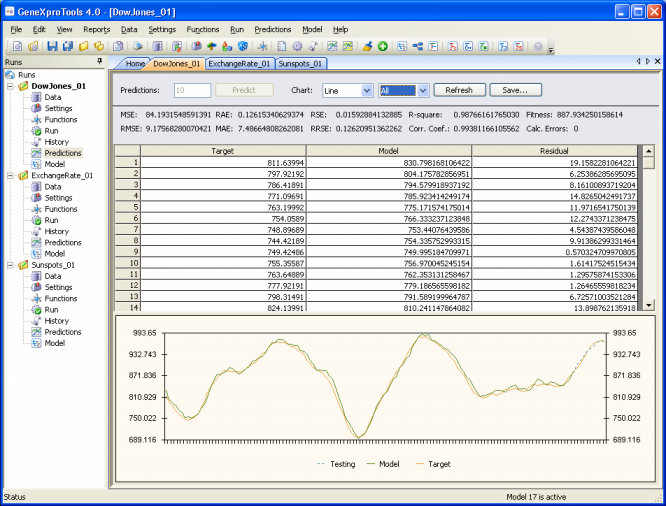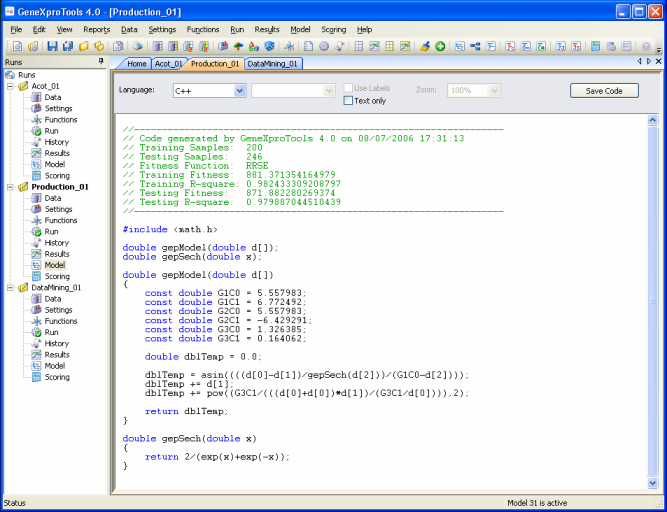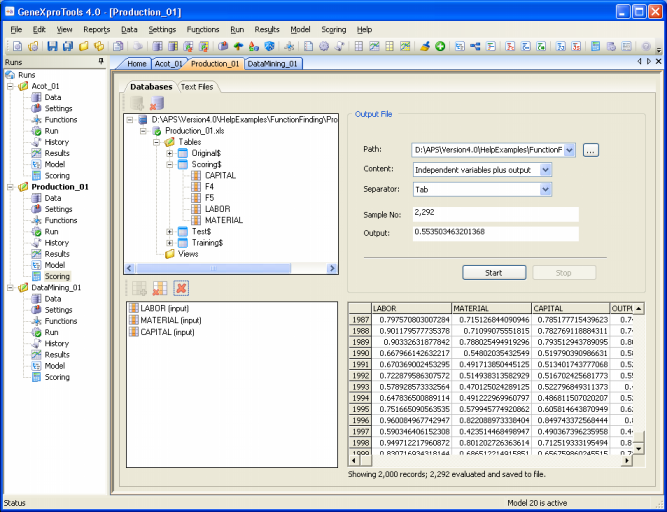| The first step in using GeneXproTools is launching it and opening existing files or creating new ones.
To Start GeneXproTools 4.0
The GeneXproTools 4.0 modeling environment contains 10 basic panels:
In the Report Panel you can find relevant information concerning the run, including all the settings used in the run, the statistical evaluation of the best-of-run or active model (highlighted in yellow in the History heading), and a detailed account of the evolutionary history of the run.
In the Data Panel you can visualize both the training and testing data, check easily the distribution of all variables and how each one of them relates to the dependent variable using the scatter plot, change a data set, or choose a subset of your data to use either for training or testing.
The Settings Panel gives you access to the most important settings of GeneXproTools, which are organized into four different tabs: General Settings, Fitness Function, Genetic Operators, and Numerical Constants.
In the General Settings Tab you can change the number of training and testing samples, the chromosome architecture, the linking function, the population size, and choose the parameters for the Complexity Increase Engine of GeneXproTools.
In the Fitness Function Tab you can choose one of the 36 GeneXproTools built-in fitness functions or design and test a fitness function of your own.
In the Genetic Operators Tab you can change the degree of genetic modification you want to use during evolution by choosing the kind of genetic operators and their corresponding rates.
In the Numerical Constants Tab you can activate the algorithm that enables the use of random numerical constants and customize both the type and range of your constants, the number of constants per gene, and also choose the genetic operators especially designed for fine-tuning the random constants in your models.
In the Functions Panel you choose the functions GeneXproTools will use to model your data. For mathematical problems, there are a total of 279 built-in functions and comparison rules, whereas for Boolean problems there are a total of 258 built-in logical functions.
From the Run Panel you command and observe the creation, optimization, and simplification of your models through the use of eight different kinds of plots, including a Curve Fitting plot to show how well the model being designed is fitting your data. For Classification and Logic Synthesis problems a Target/Model comparison is shown instead during the evolutionary process.
The History Panel allows you to explore the best ancestors of the best model as you can select the most intriguing ones and then check them up in more detail in the Results and Model Panels.
In the Results Panel a thorough statistical analysis of the evolved model is done on the fly both for the training and testing sets. Furthermore, the model output and the target are compared using both a table and a chart (curve fitting for Function Finding and Target/Model Comparison for Classification and Logic Synthesis).
In the Predictions Panel is where you use the evolved model to make predictions about future events in Time Series Prediction. Here is also where a thorough statistical analysis of the evolved model takes place and, if in Testing Mode, here is also where you can test the predictive accuracy on the testing samples.
In the Model Panel you can see the mathematical/logical intricacies of the evolved model in the universal representation of Expression Trees or automatically translate the native Karva Code into several programming languages (Ada, C, C++, C#, Fortran, Java, Java Script, Matlab, Pascal, Perl, PHP, Python, Visual Basic, VB.Net, Verilog, and VHDL).
In the Scoring Panel you can apply the evolved model immediately without leaving the GeneXproTools environment. The scoring engine of GeneXproTools uses the JavaScript code of your models to score your data. Both Excel/Databases and Text Files can be scored and the output saved to Excel (csv) or text files. In addition, for small datasets, the output can also be observed in its entirety from the Scoring Panel.
|
